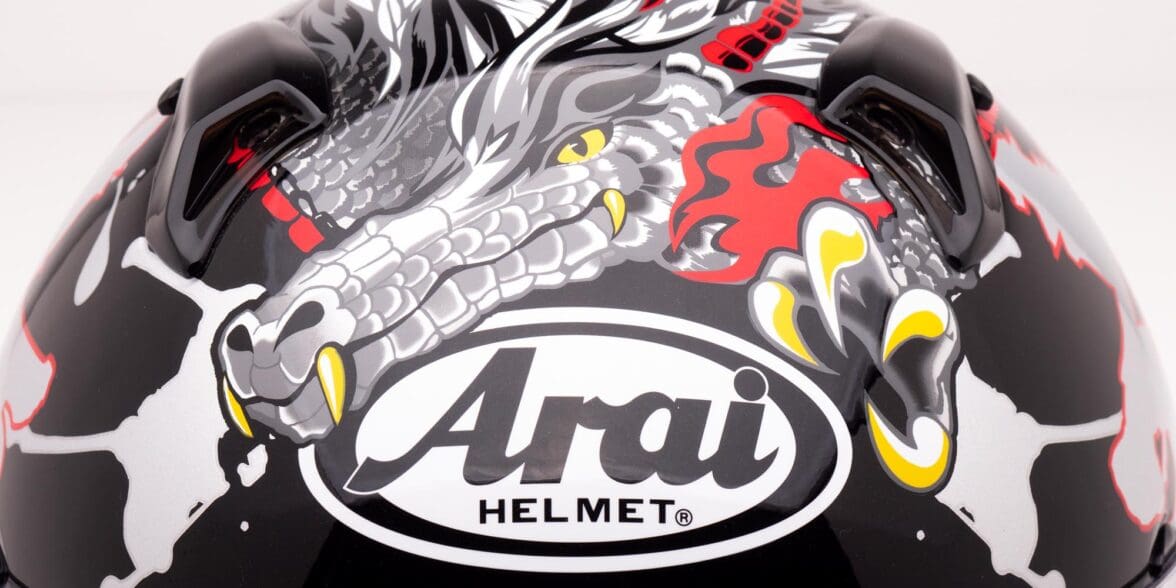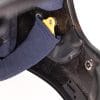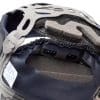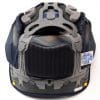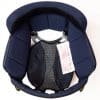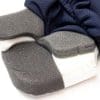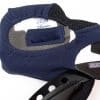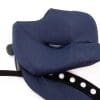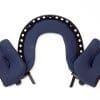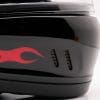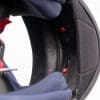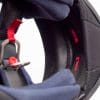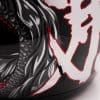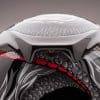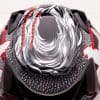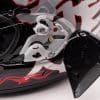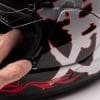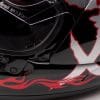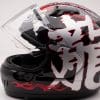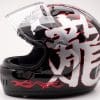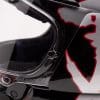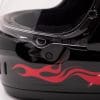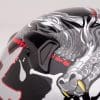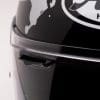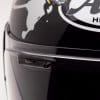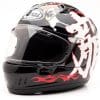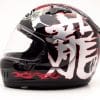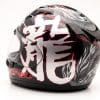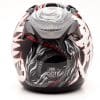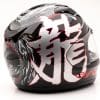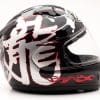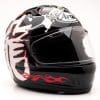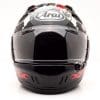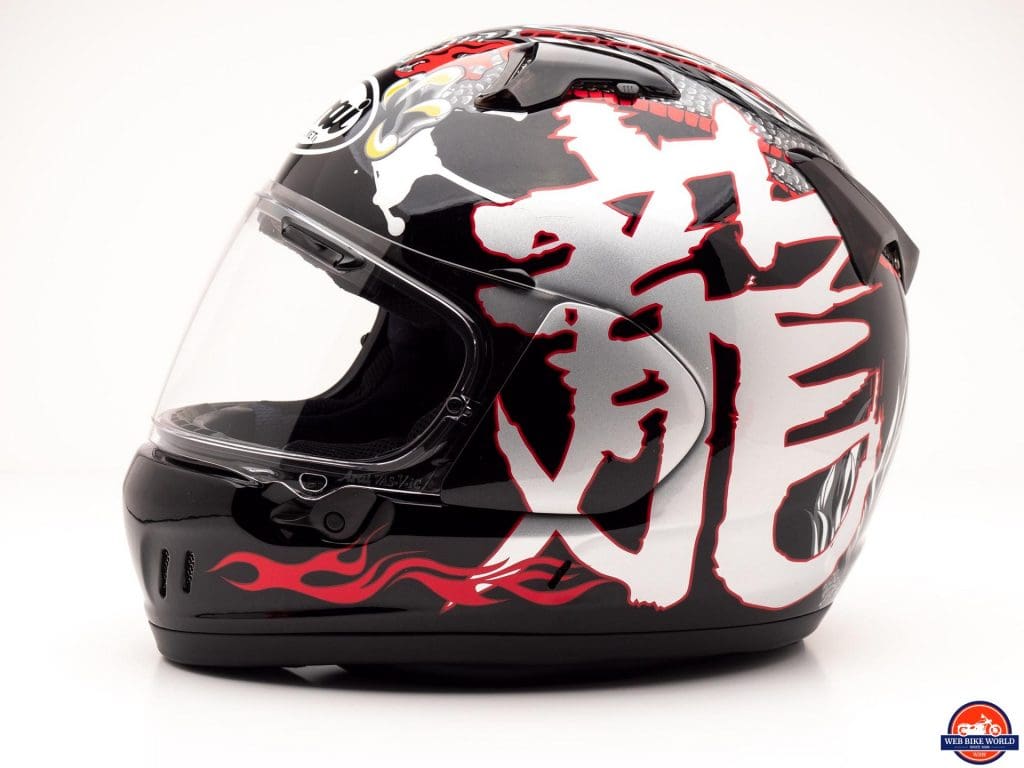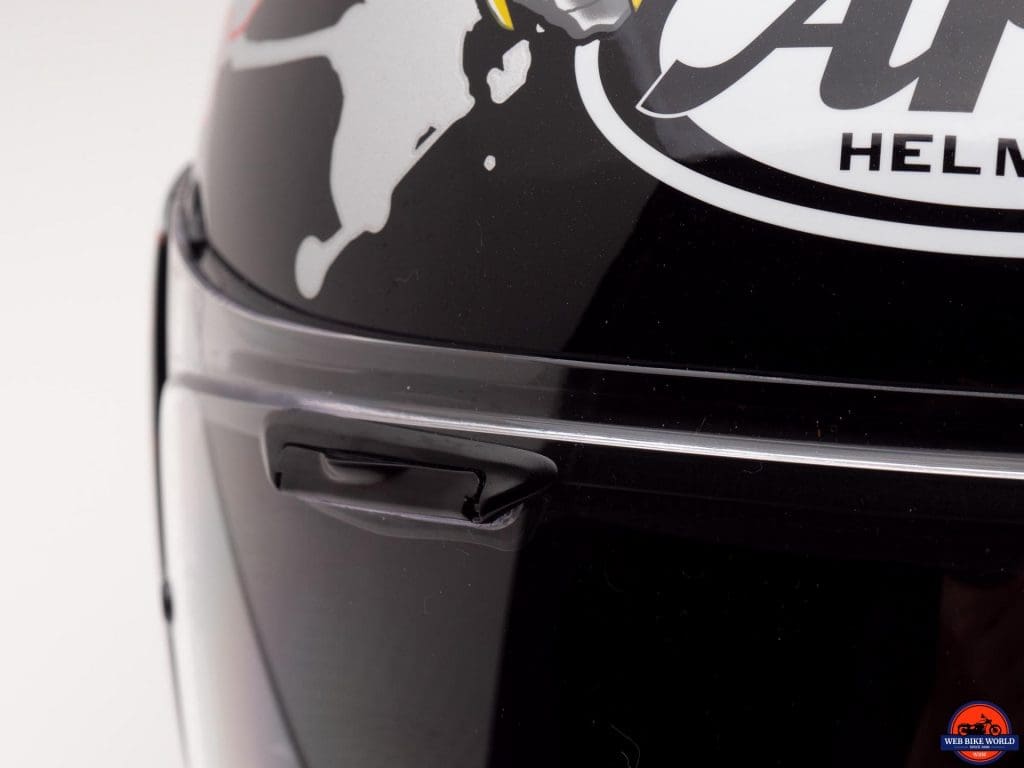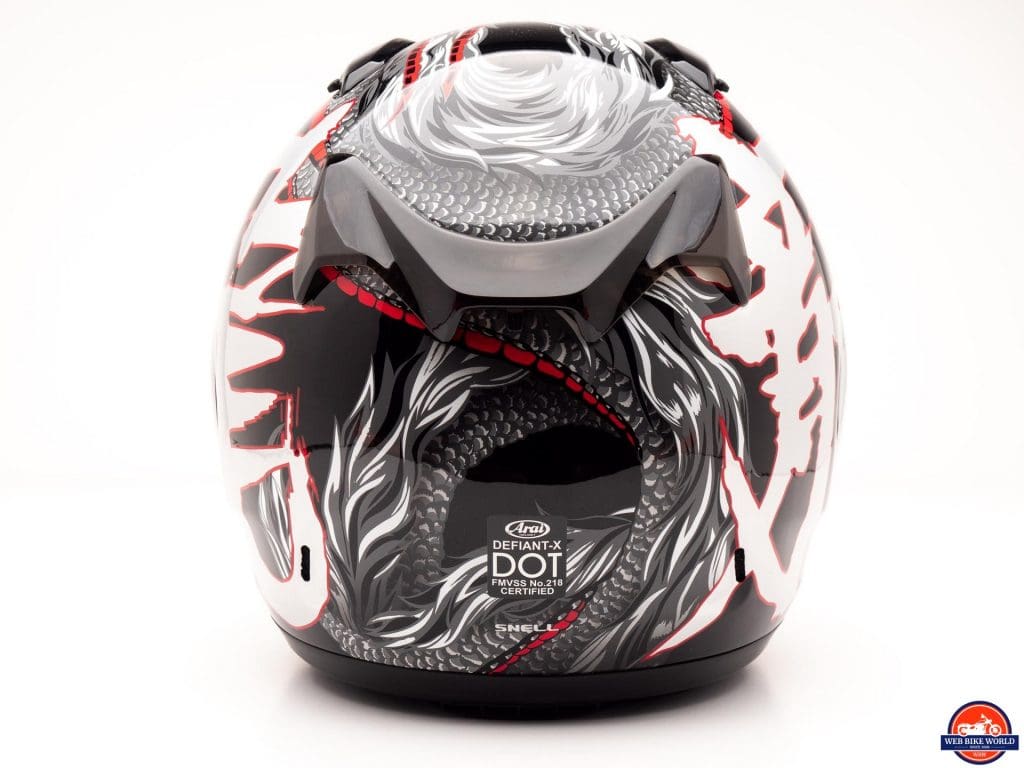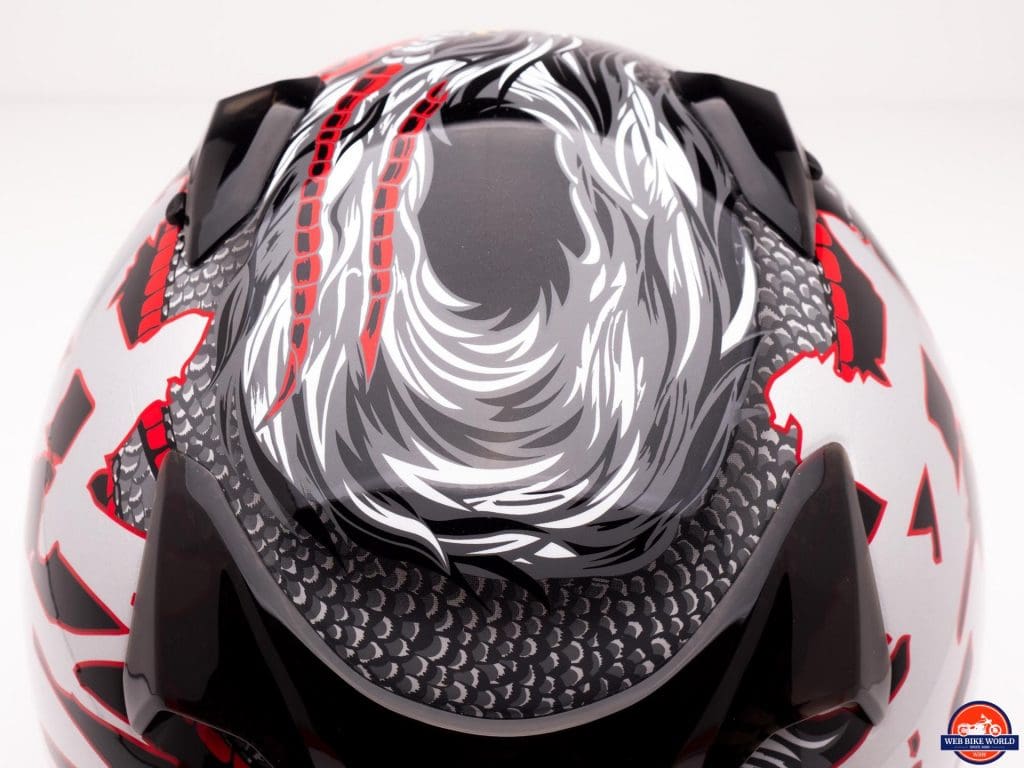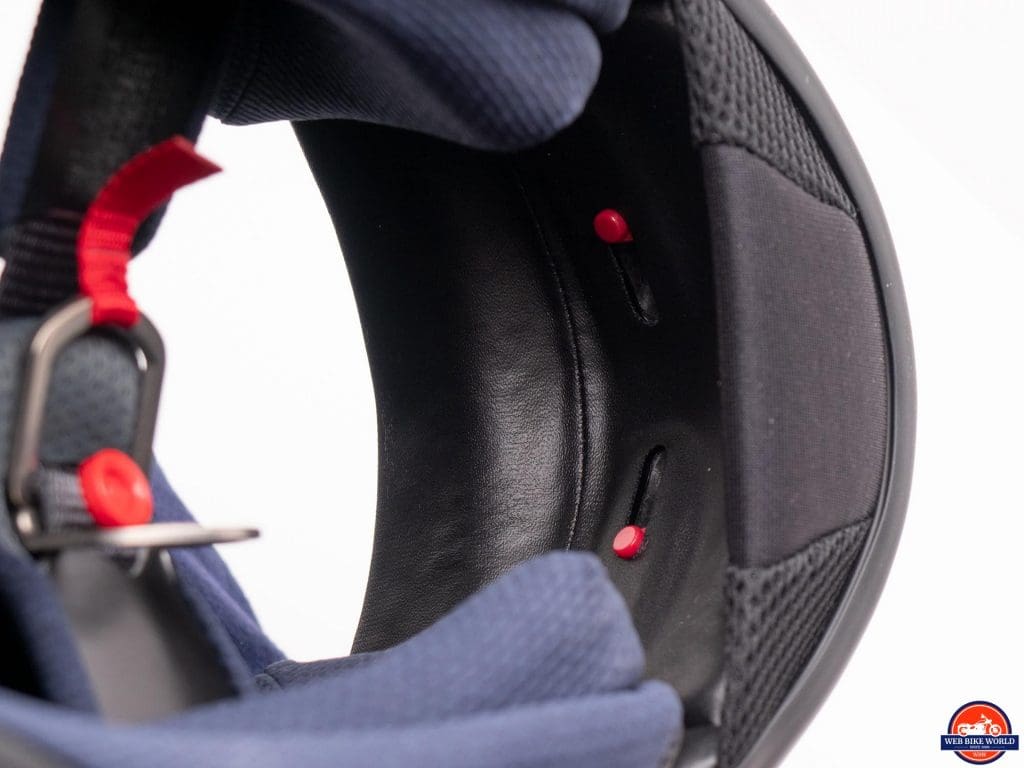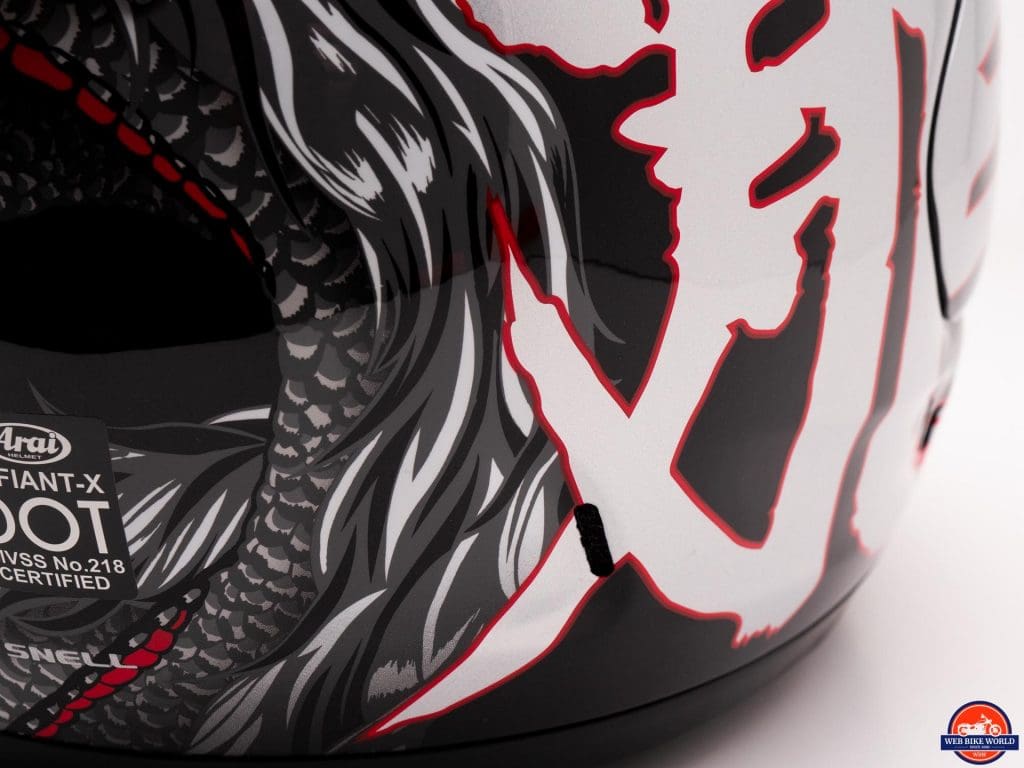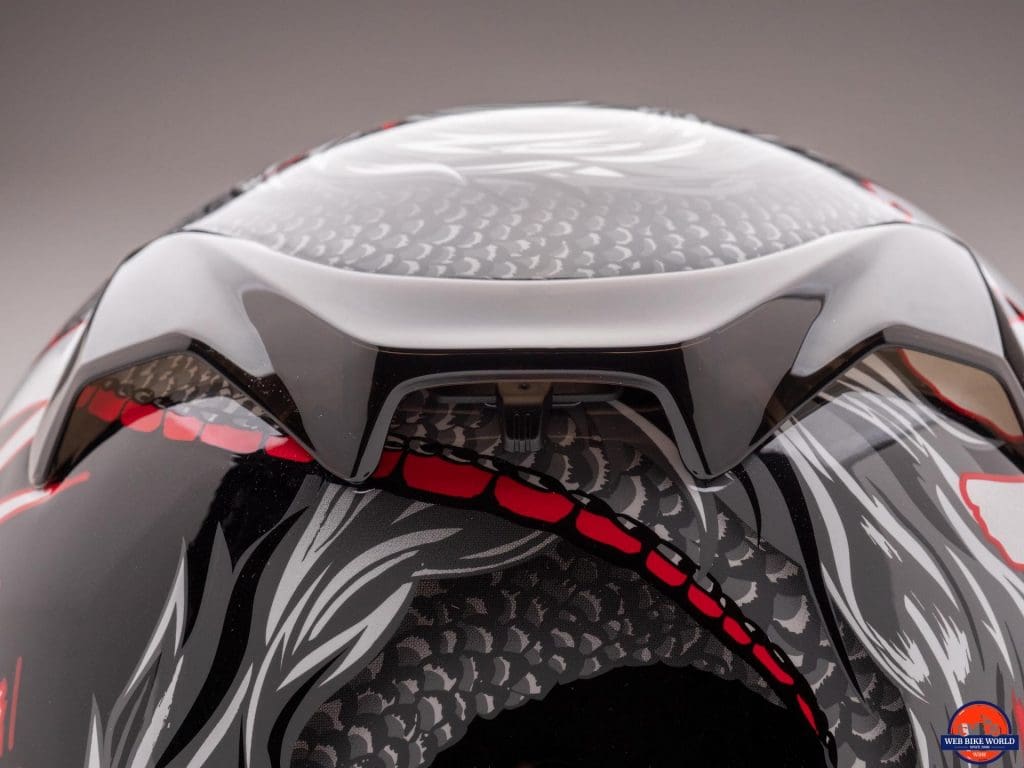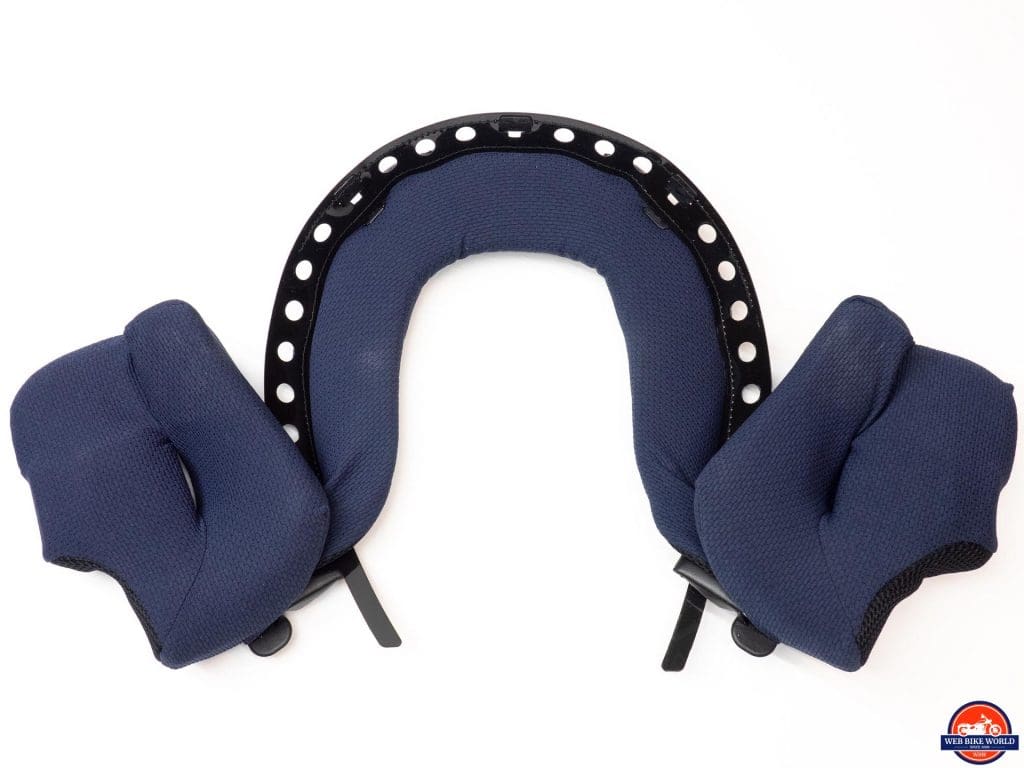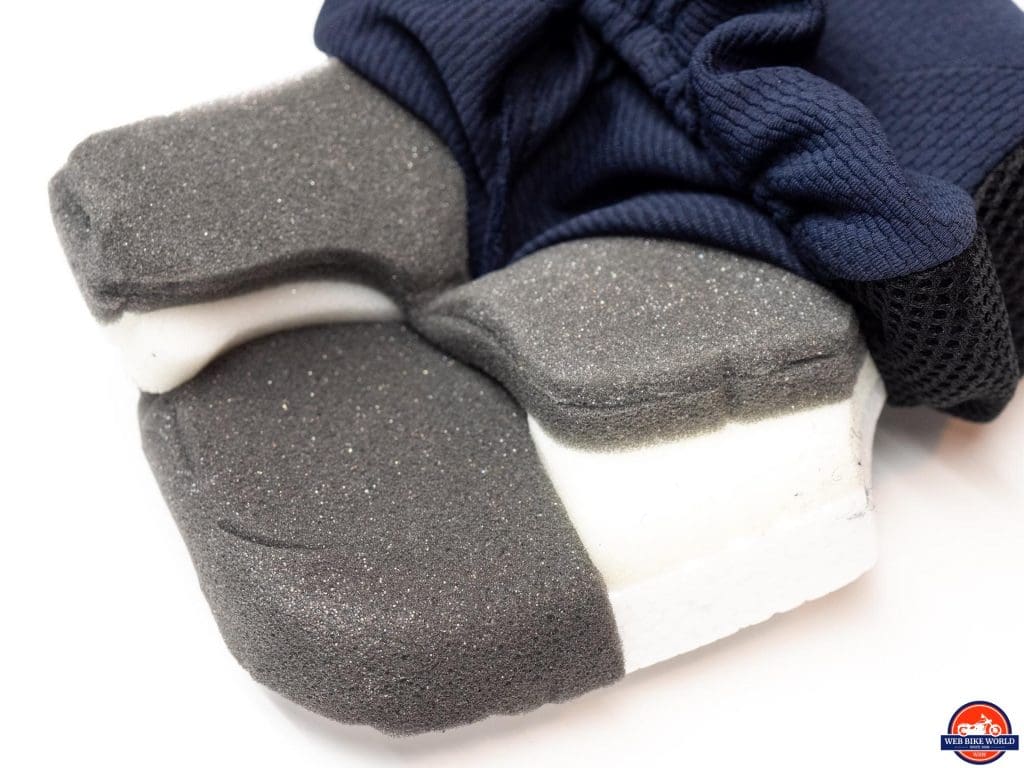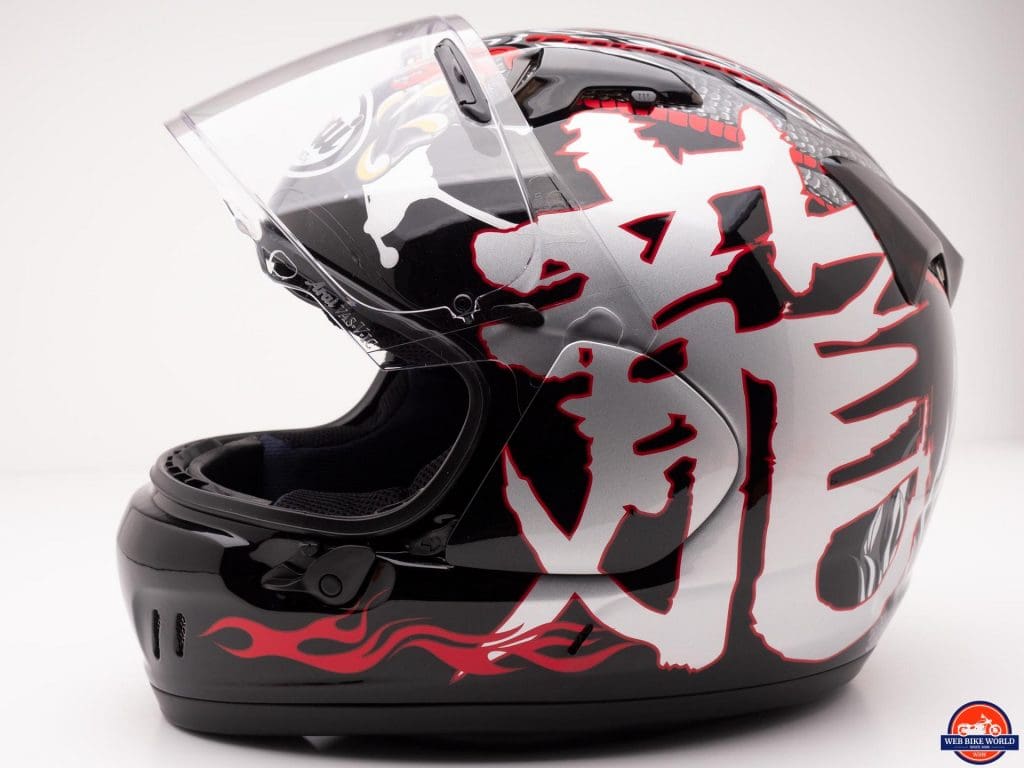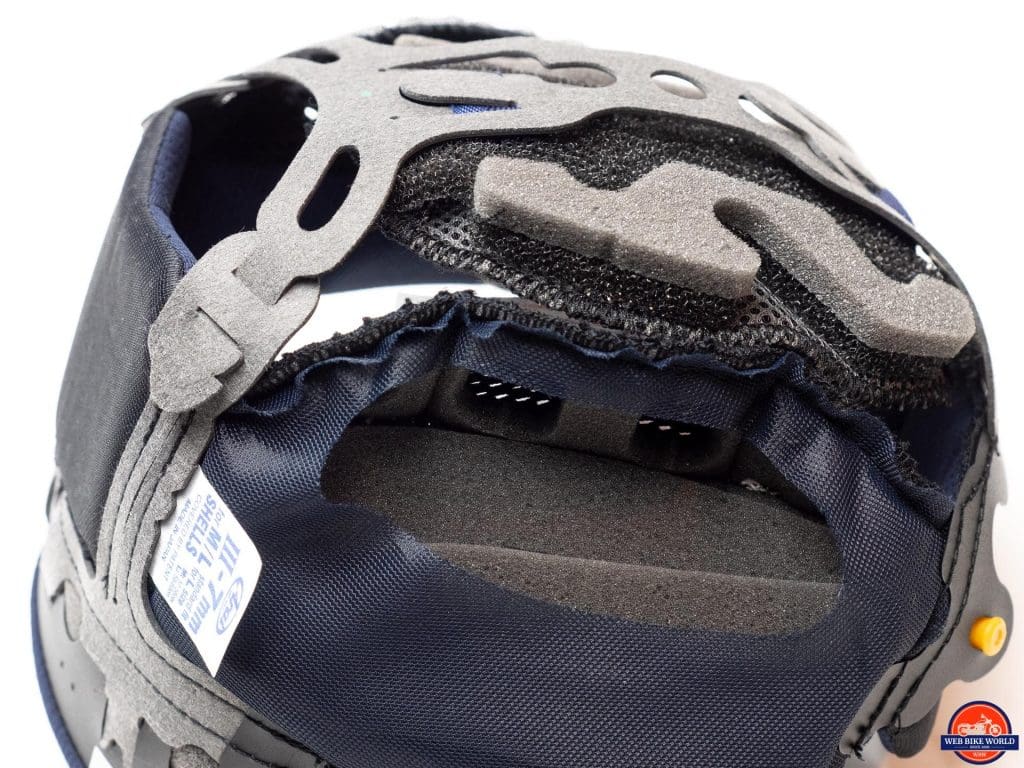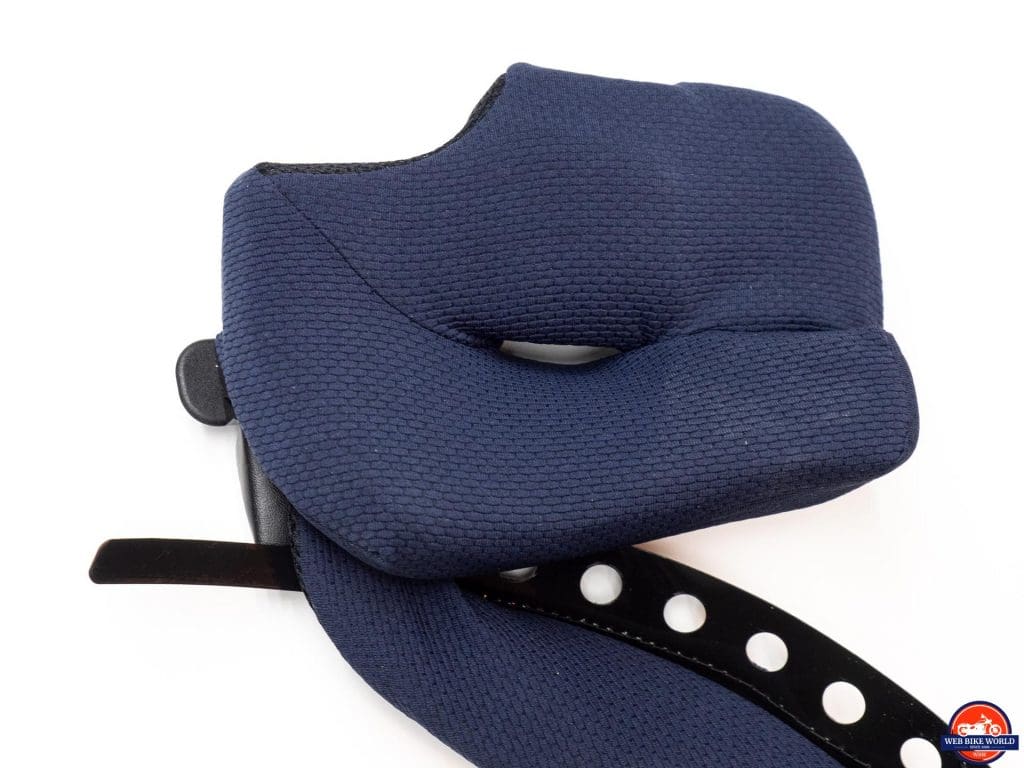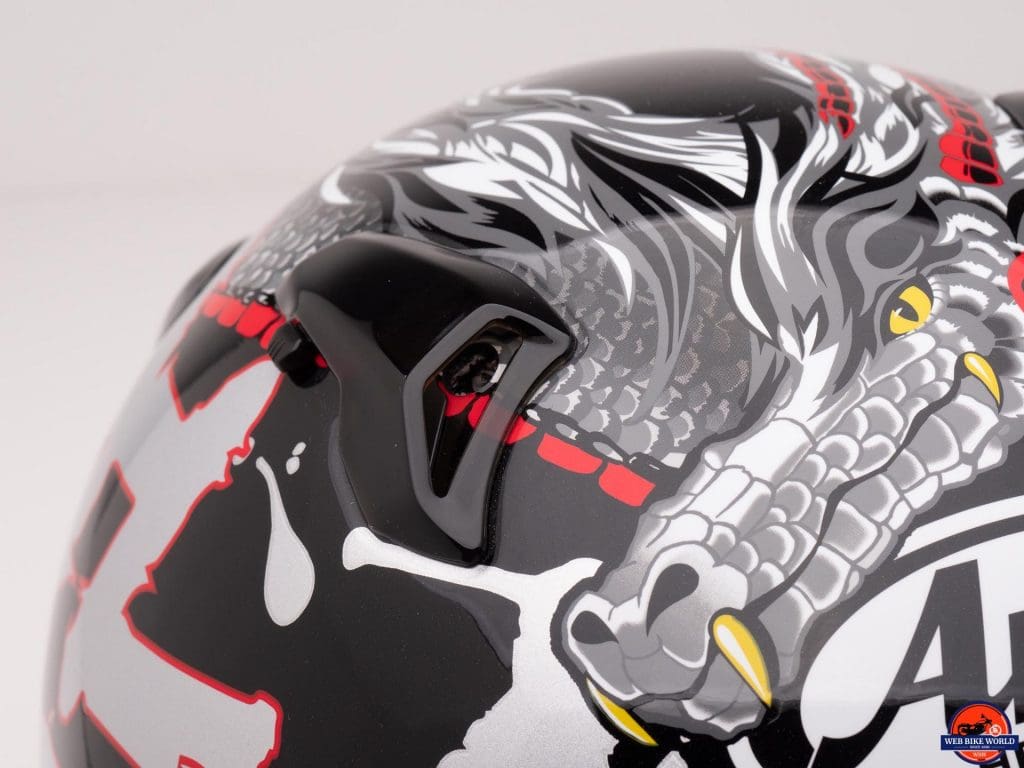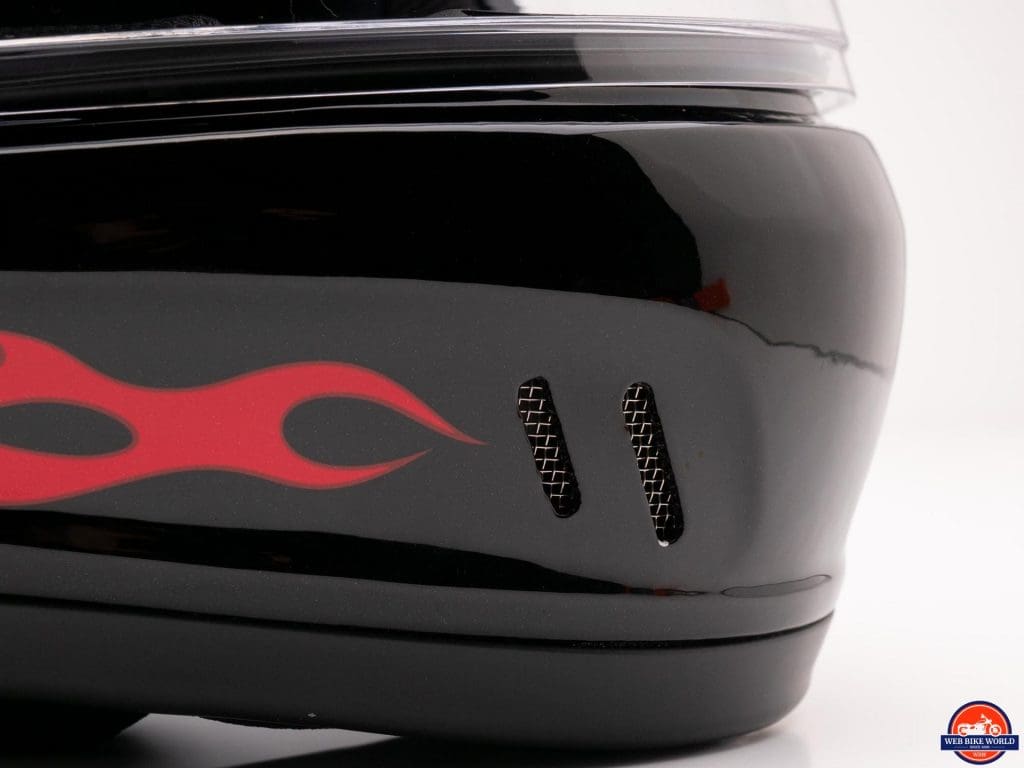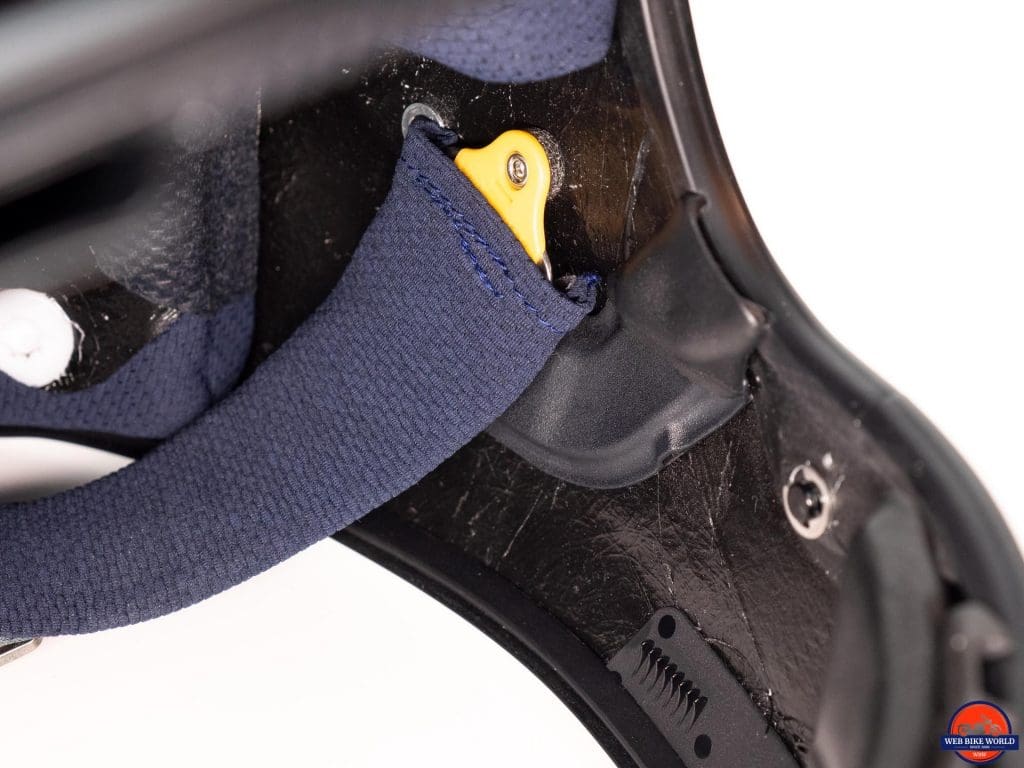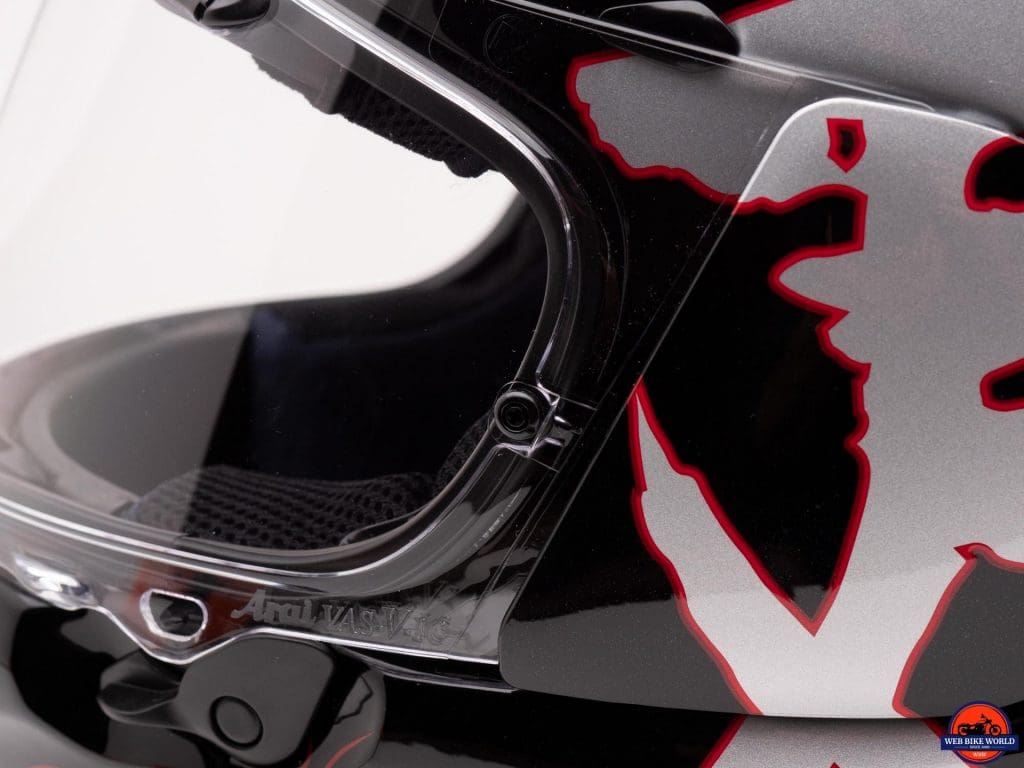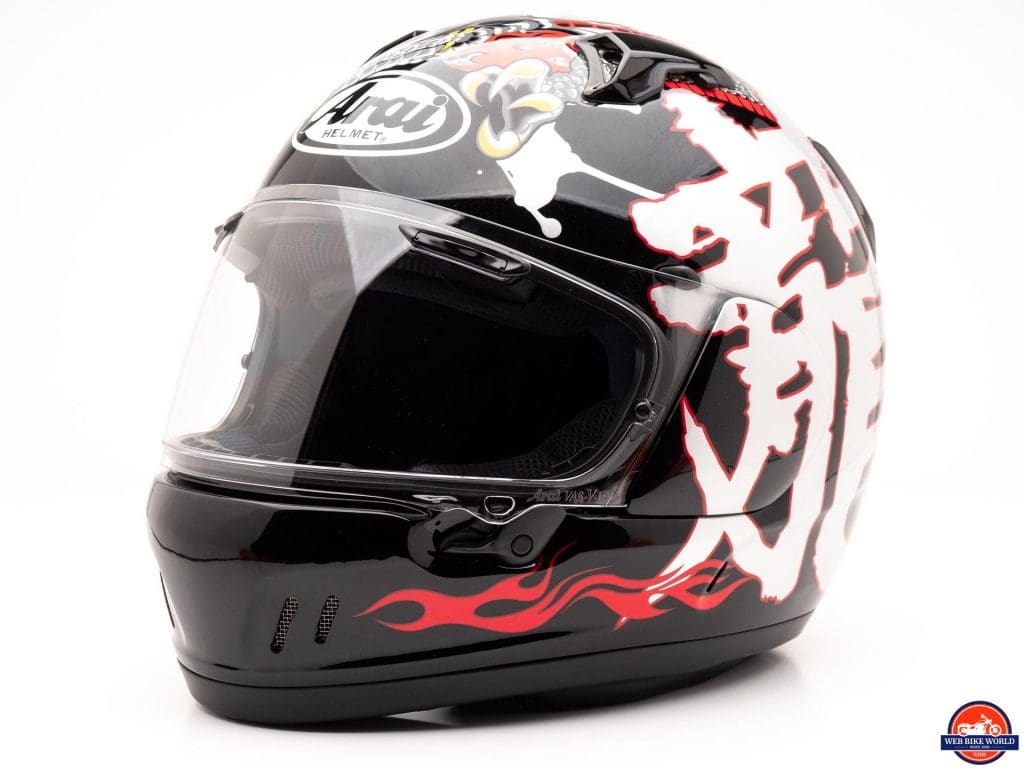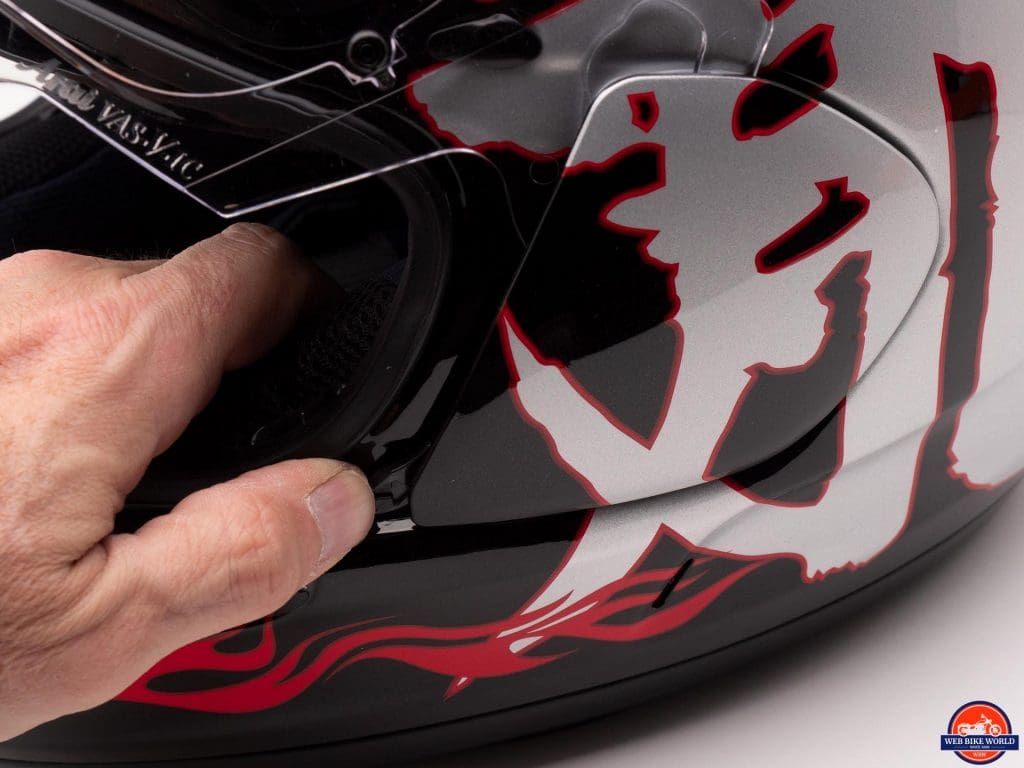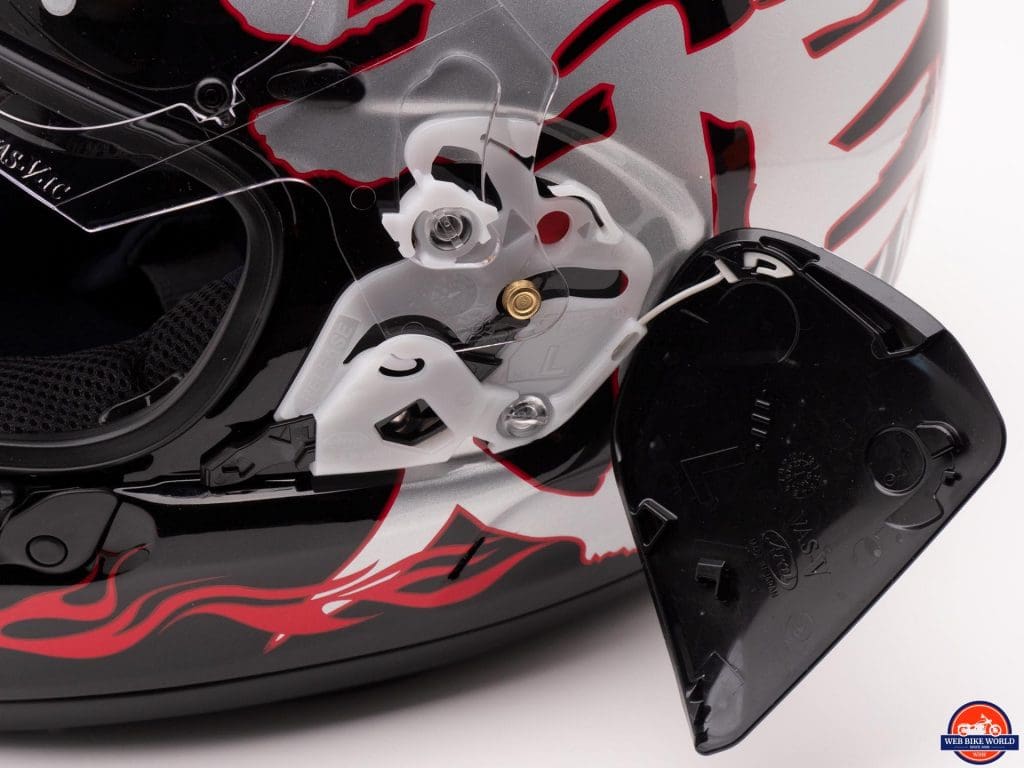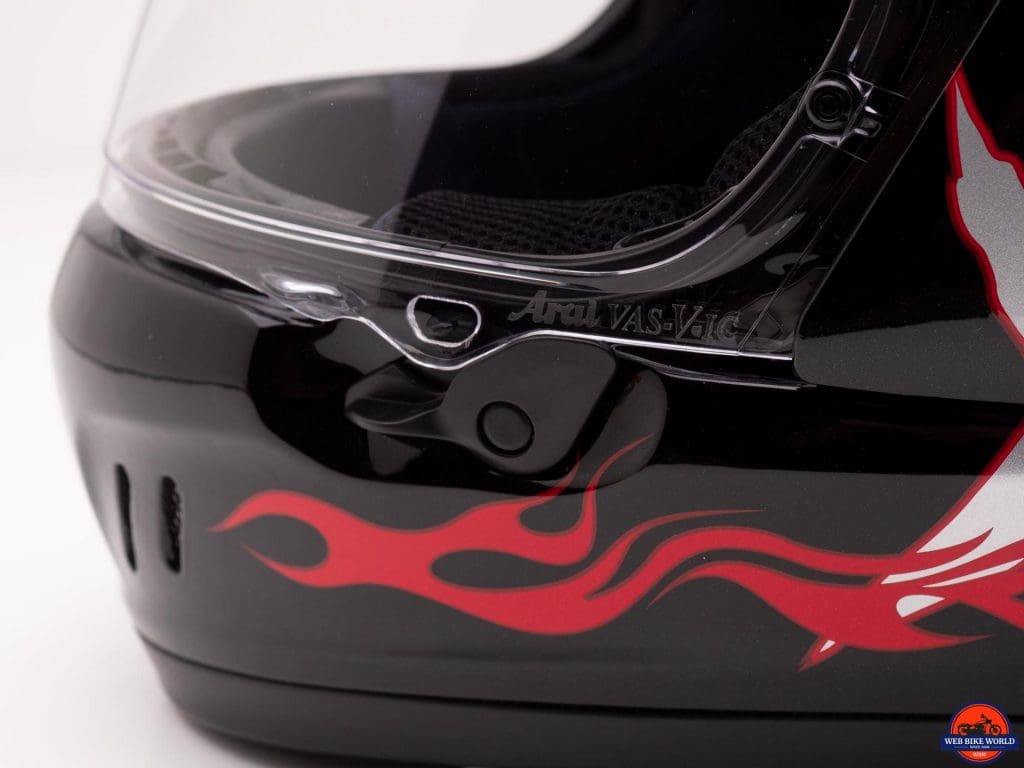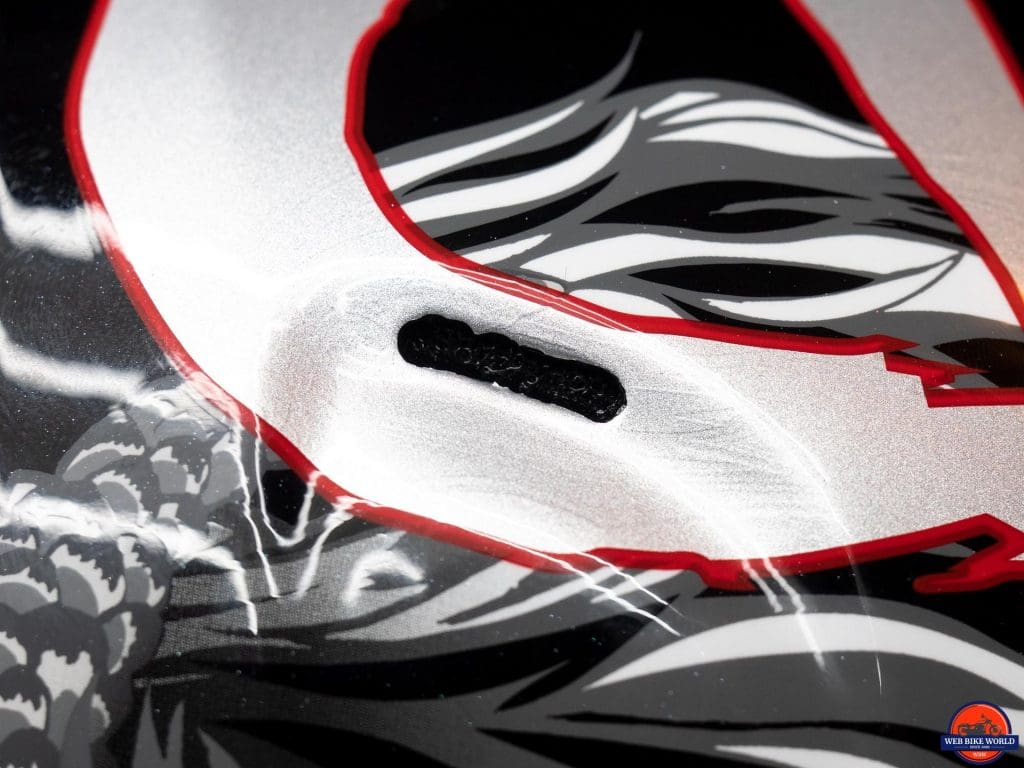Arai helmets. Anyone who has taken the time to study the process that goes into making an Arai helmet will no doubt agree that they make helmet production into an artform. From the handmade shells to the solid operation of moving parts like vents and visors, Arai helmets are definitely a class leader when it comes to quality of build.
The company entered its present form (more or less) in 1950 when Arai Hirotake Shoten, Co., Limited was established in Ohmiya, Saitama. This is when they first started manufacturing “helmet shells” and from that time they continued to grow into the Aria that we know today.
Decades later Arai as a company would reach its present form when its name was changed from “Arai Hirotake, Limited” to “Arai Helmet, Limited” in 1986.
Along the way they achieved some pretty impressive milestones such as producing the first Snell certified Japanese helmet in 1963 and introduction of the VX-3 off-road helmet in 2006 which was the first helmet with Arai’s Emergency Release System.
There were plenty of other innovations and firsts along the way for Arai and now it’s 2019 and we’re going to be taking a look at one of the newest helmets in the Arai lineup. I’m looking forward to seeing how Arai will take their history and tradition and blend it with producing a modern motorcycle helmet.
The Defiant X
The Defiant X (known as the Renegade V in Europe) is one of the top of the line street helmet offerings from Arai. It sits beside the Quantum-X and Signet X helmets and is priced similarly starting at the upper-mid 600’s (in USD). The main difference between these three is that the Defiant X offers an intermediate oval fit while the Quantum X and Signet X provide a rounded and long oval shape respectively.
The Defiant X is supposed to have a more “urban” or “retro” style to it by way of the shape of the chin bar and the always open mesh vent intakes located there. It’s subtle but it’s there. Despite these styling cues, the Defiant X is still quite recognizable as an Arai lid with the distinctive side pod covers over the visor pivot and the brow/visor vents which are unique to the marque*.
Note: There was another manufacturer that offered strikingly similar, if not identical, brow vents in their visors and that was SparX. We reviewed their SX-07 helmet back in 2008 and it is the only other helmet I’ve seen with these types of vents. However, SparX disappeared after a few years leaving Arai again as the only maker using these vents.
I like the double D-Ring is used for fastening the chin strap on the Defiant X. I also like the Euro-style ratcheting fasteners but I have had both and both always seem to work well but D-Rings do save some weight and simplify construction.
The Defiant X meets both DOT and Snell 2015 specifications which are good news for track riders wanting to take the helmet to their local track day. For information on the details of Snell 2015, we’ve got lots of info here. Now let’s jump into the details of the helmet itself.
Paint & Graphics
I expected a helmet from Arai to have excellent paint and finish and the Defiant X definitely met that expectation. The base black paint on the shell has a beautiful metal flake in it with the subtle reflective particles only noticeable on close inspection.
The graphics are likewise very well applied and straight. The helmet I was sent displays one of their latest graphic designs called “Dragon” and, as one might guess, a dragon is indeed depicted on the helmet surface.
The color scheme overall is black, silver, and red and while the styling isn’t something I might have picked out I can’t deny that the artwork and execution are outstanding. Add to that the beautifully smooth clearcoat and I have to give Arai an “Outstanding” rating for paint and graphics.
Construction
The Defiant X uses Aria’s PB-CLC shell which includes what they refer to as “Peripheral Belts” to create a very strong shell while maintaining a large eyeport. The shell is made by layering several materials and the belts run in a fashion that prevents cracks from expanding in the event of an impact.
That’s a very high-level view but I can say that the result is a thin shell that is very strong and stiff. When handling the helmet with the liner and cheek pads out it’s surprising how strong the shell feels. The rigid and tough feel also comes from the R75 shape Arai uses.
Having the shape of the shell with at least a 75mm radius in a continuous curve makes it better at dispersing energy from impacts. I admit I don’t fully understand the physics involved but I can try and flex the shell and find it resists very well.
View of the chin curtain & the interior chin vent sliding covers
Under the chin bar is a modest non-removable chin curtain measuring 1.5 inches (38mm) at the widest point. Unlike the curtain in the Vector or Signet X, this curtain doesn’t drop down for increased effectiveness. This is disappointing and we’ll see why a bit later.
On the front of the chin bar are four mesh covered intake ports for venting. The two inboard vents are 1 inch in length (35mm) with the two outboard ones running right at 7/8th of an inch (22mm).
The edges are beveled on these ports except for one of the long edges of the larger right side port. That edge feels unfinished and a little sharp. Since it’s found on only one edge of one port, I have to assume this may not be present in all samples of the Defiant X. This is a surprising quality control issue on an $800.00+ helmet.
At the rear of the helmet are two similarly shaped ports to those found in the front for exhausting air from behind the EPS. These .75 inch (19mm) ports both suffer from some rough cutting. The edges are not well finished (Note the rough edge of the opening in the picture above). One can see how these should have been neatened up before the paint and graphics were applied. As such the silver in the graphic makes it easier to notice these imperfections.
Moving on to more positive notes the vent closure mechanisms on the top and rear of the helmet all work smoothly and positively. The actual external parts of those vents and rear spoiler all feel very secure and strong in their placement. The vent and spoiler parts are well finished and are made from a dark translucent plastic that lets one see the graphic underneath.
Sliding switch under the rear spoiler opens & closes three individual ports under the spoiler
Overall the construction is very solid and the moving parts provide the feeling that they will keep moving properly for a long time. However, I am less than thrilled with how the ports I mentioned were cut and finished. This seems like something that a premier manufacturer shouldn’t let out the door. These things do happen, though, and I don’t think this actually affects the performance of the helmet.
Interior
In typical Arai fashion, the interior components are set up a little differently from most manufacturers. It’s not good or bad, but a little different when it comes to removing the liner and cheek pads. Once you understand how to do it there’s no problem, but being aware of the different approach can help.
For instance, most full-face helmets have the cheek pads include the portion of the neck roll. Here the neckroll is a separate, “U” shaped piece and the cheek pads connect with it via small plastic tabs. Those cheek pads also do not snap into place but rather are wedged between permanently attached padding in the interior.
Cheek pads & neckroll removed from the helmet
As I said, this isn’t good or bad, just a bit different. I would recommend being careful when removing these parts for the first time so you can study how it all goes back together. Thankfully, once one knows what to expect, it’s pretty easy.
Why worry about removing the interior? Beyond the ease of cleaning the lining, Arai includes customizable padding in the lining to allow wearers to adjust fit. Getting the lining in and out a few times is often part of that process.
Speaker “ledge” under the cheek pad cover & plenty of room for up to 2in (50mm) speakers
Due to the design of the cheek pads in the Defiant X, there aren’t speaker pockets in the shell EPS as there aren’t any EPS attached to the shell. Instead, EPS is included in the cheek pad piece. There is a cutout in place that can be accessed by peeling back the covering. The provided space should support speakers up to about 2 inches (50mm) in diameter which should be enough for most comm systems.
Helmet Weight
Picking up the Defiant X I thought it seemed weighty and putting it on the scale showed this to be true. Tipping the scales at 3lbs 9.1oz (1,618g) the Defiant X is a bit heavier than the now discontinued Vector 2 iI reviewed last year. Of course most Snell rated helmets are going to be a bit heavier in general due to the extra strength required to get certified.
It may sound like a cliche but one doesn’t really notice the weight when wearing it. The overall balance is excellent. One typically has to pay for strength somewhere and short of employing some exotic (expensive) materials, a few extra ounces is the price that is paid.
Fit & Comfort
The fit of the Defiant X in size large straight out of the box is very close in size to most major manufacturer’s size large. Rated for 59-60cm head circumference, the fit is just slightly more generous than some other brands such as Shark or AGV but more similar to the fit of a size large from an HJC or Shoei helmet.
Fit is, of course, subjective and Arai provides ways to customize the fit for the best comfort and protection. First off, one can order cheek pad sets and top liners in a variety of sizes in 5 mm increments.
Top liner showing the some of the 5mm peel-away foam used for custom fitting
Within the cheek pads are portions of foam that can be peeled away to add extra room in certain areas to customize the fit. Similar layered padding is present on the top of the comfort liner allowing adjustment here as well. Arai provides plenty of options for riders to get the best fit possible and I’m not aware of another manufacturer that has the breadth of built-in fit adjustment.
Comfort
Of course good fit is not the only factor in providing a comfortable experience. The Defiant X employs an anti-microbial and low acidic fabric to line the interior padding. This is the material that sits directly on the rider’s skin and frankly, I’m not impressed with the feel here.
This fabric has some texture to it, and it is not made from a particularly soft yarn. As such, the cheek pads feel just a little “scratchy” against the skin of the cheek. It’s not that distracting but it is there and I’m surprised by this. Maybe over time, the fabric will “break in” and feel a bit softer and/or smoother?
Cheek pad closeup shows material could be softer and/or smoother for improved comfort
Another subjective point is the placement of the chin strap. I found the strap sits a little closer to my neck compared to other helmets I’ve worn (such as the Scorpion EXO R420). It isn’t uncomfortable but if it was placed any further back I would find it irritating.
Ventilation & Noise Levels
The Defiant-X has a lot of vents integrated here. This includes a chin vent, a pair of brow vents in the visor, two top vents, exhaust vents under the rear spoiler, a pair of small intake vents below the cheeks and a pair of small exhaust vents a few centimeters behind the intakes.
There is a total of thirteen vent openings in the shell plus the two brow vents in the visor adding up to a total of fifteen holes in the helmet. Four of these are always open while the rest can be closed. Some, however, are easier to open and close than others.
Right side top vent in the open position
The chin bar vents, comprised of four mesh screened holes, are always open on the outside but have two small sliding covers on the inside. Unfortunately, these sliders are hard to reach and are a bit small. This makes them difficult to find with gloves on, and the required reach to actuate them is a bit much for my size medium hands.
The brow vents, top vents, and the under-spoiler exhaust vents all have full and partially open positions allowing for some adjustment to airflow beyond on and off. The top and rear exhausts have direct passages into the interior through the EPS foam.
Right side chin bar vents
Those visor brow vents are ducted to release airflow back by the temples instead of onto the forehead. The smaller vertical openings of the lower forward exhaust vents are also ducted and are designed to pull air from near the cheeks out of the helmet.
That’s a lot of vents, but how well do they work? The first thing I noticed when riding with the Defiant X on my Ninja 1000 is that a lot of air comes up under the chin bar. The small chin curtain doesn’t seem to do a lot and one feels a lot of airflow on the face. This occurs despite what vents are open or closed.
With all of the air coming in from under the chin bar, it is difficult to tell how the chin bar, brow, and cheek vents are working. Opening and closing the chin vents and/or the brow vents made no discernable difference that I could tell in airflow. Even at highway speeds (70mph), I couldn’t tell a difference.
Duct for the forward exhaust vent that sits underneath the cheek pad
Changing the windscreen position didn’t make much difference. The lowest setting is very low on this bike and the highest is what I would consider roughly normal/low for a sport touring bike. Perhaps taller screens might help to reduce this “under-chin air” experience.
All that said, one certainly gets plenty of air on their face. As for the top vents, there is a little bit of a breeze noticeable when they are open, but not much. I’d call the airflow from these vents average at best.
Noise Levels
With so many openings one would expect the Defiant X to be a noisy helmet and that’s a fair assessment. While it isn’t very loud, it does have its share of wind rushing noise, starting at 25-30mph. The noise doesn’t get that much louder at speed and the noise seems to be mostly in the midrange frequencies with very little booming and no whistling.
Opening the top vents do add some more wind noise but it is more of a set of additional frequencies than an overall increase in “loudness”. The visor vents being opened or closed doesn’t seem to affect noise much, or at least not enough for me to tell.
Visor is Pinlock ready and includes a clear Max Vision insert (not installed in photo)
I couldn’t get the Defiant X to create any whistling noise which is a welcome change from the Vector 2 I reviewed. This helmet is definitely quieter than the now discontinued Vector 2 but it still is on the lower side of “average” when it comes to noise control.
Note on Venting & Noise Levels
Testing was done while riding my 2013 Kawasaki Ninja 1000 on both secondary roads as well as interstate highways. The Ninja 1000 has three available positions for windscreen height and I tested all three heights during my test rides.
I always wear custom-fitted earplugs when I ride including when testing helmets. Also, rider height and motorcycle specifics such as fairing, non-faired, etc can affect noise and ventilation performance.
Visor & Outward Vision
The view out of the Defiant X is very good with a tall and wide eyeport. I would say it offers a very generous top to bottom view and an above average angle of view from side to side. The visor is designed to accept Pinlock Max Vision insert and a clear insert is included with the Defiant X.
The visor itself moves smoothly in typical Arai fashion and feels solid in place. The pivot points are covered with “side pods” that protect the release and pivot mechanism underneath. When closed, the visor sits against a thick gasket and makes an excellent seal when locked into place. One needs to be sure they really pull down on the visor to get it “locked in” for the best sealing.
The locking mechanism consists of a short lever with a ramped pin that locks into the visor when pulled firmly shut. Lifting up on the lever releases the pin and then the visor can be raised from the lift tab. It still needs a little outward angle when lifting to get it over the pin but after a few openings, it becomes second nature.
Visor Removal
I can feel a collective “sigh” coming from readers everywhere as I start to discuss removal of the visor on an Arai helmet. However, there is good news here. This removal/installation process on the Defiant X is much improved over what I have experienced from other Arai lids in the past.
To remove the visor, one lifts the visor to maximum height and presses in the sliding lever below the pivot point. This releases the side pod cover which is tethered to the helmet. A nice touch making it impossible (or nearly so) to drop the cover and scratch it.
Pressing the visor removal lever
Once the covers are removed pressing the same lever again (do each side separately) will push the little brass pin in the visor out of the channel in the side pod. Pulling the visor down a bit will line it up to allow removal of the visor from its captive spot. While it may seem more convoluted than other designs, it is pretty easy.
Sidepod cover removed revealing the pivot mechanism
The installation process is much improved as well. Seeing how the visor comes off helps. Also, some visual aids have been added to ensure one can line everything up properly. The brass pin goes right on top of a distinct red dot which makes lining the visor up pretty easy.
Get it in place and raise it a little to get everything on track and the visor will be in. Again, I would only try to do one side at a time, but this process is much better than the previous design. Getting the sidepods lined up to click back in still takes some practice and is probably the most fiddly bit of the process.
Optical Quality
The optical clarity of the clear visor included with the Defiant X is excellent. The view out of the large eyeport is nearly distortion free with only a minimal amount of optical distortion visible. If I weren’t specifically trying to find some distortion I might not have ever noticed there was any.
Since the visor is Pinlock ready, there is an inner edge to the visor which sits along the shape of the insert. Being a Max Vision insert it goes very close to the edge of the visor and it is only noticeable at the extreme top and bottom of the view.
Visor lock release lever
Since the visor isn’t treated to be anti-fogging, use of the Pinlock insert is definitely welcome. I personally have had very good luck using these inserts in many helmets and they have always performed well for me. I understand some riders don’t care for using Pinlock shields so one could use a chemical coating such as Clarity Defog IT or other similar products.
Arai also offers a non-Pinlock clear visor in case one wants to rid themselves of the lines for the insert.
It includes tear-off posts so this is likely designed for track days and racing. I would definitely check with Arai or your local dealer to make sure this particular visor is legal for street use.
Conclusion
The Defiant X in the Dragon graphic is certainly pretty. Even though it’s not my style when it comes to the graphics, paint, design, and finish, it is executed beautifully. Rigidity and strength of the shell are what one would expect from a premium maker like Arai. Their handmade shells and their belt construction are functional works of art designed to offer very good protection in the event of a crash.
It is unfortunate that some poorly finished openings in the shell mar an otherwise well put together helmet. The poor cutting on the small rear exhaust ports and the odd sharpish edge on one of the chin ports are something I feel shouldn’t have made it into a helmet that starts at $695.95 (USD).
Closeup of exhaust port opening (The cutout is not well finished)
While the small issues with QC aren’t going to affect overall performance, the venting situation bothers me a little. One gets a lot of air in their face and the vents up front don’t seem to have any discernible effect. I will grant that my specific height and motorcycle setup could affect things but I’ve tested many helmets on this bike and this is not typical behavior.
In the final analysis, I’m a bit torn on the Defiant X. Based on the sample I received I’m only willing to give the Defiant X 3.5 stars. If I had received a copy that didn’t demonstrate the noted QC issues I’d be willing to give the helmet a 4-star rating. The “in your face” venting which doesn’t seem affected by venting controls and the “fair” comfort of the liner take away that fifth star the Defiant X could have earned.
Agree? Disagree? Have a question? Hit us up in the comments below!
Pros
- Excellent paint and graphics
- Solid and protective feel
- Beautiful view out of the eyeport
- Lots of venting
Cons
- Quality control issues present on ventilation holes
- Cheek pad liner is a little rough
- Venting controls seem to have little if any effect
Specs
- Manufacturer: Arai
- Price (When Tested): $593.95
- Alternative models & colors:
- Solid: Black, Black Frost, Grey, Gun Metallic Frost, White
- Graphics: Carr, Dragon, Diablo
- Sizes: XS, S, M, LG, XL, 2XL
- Review Date: May 2019


